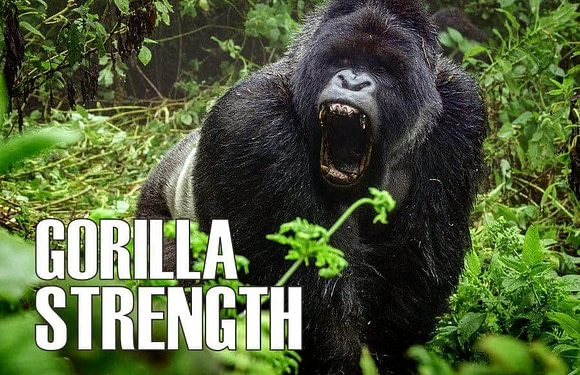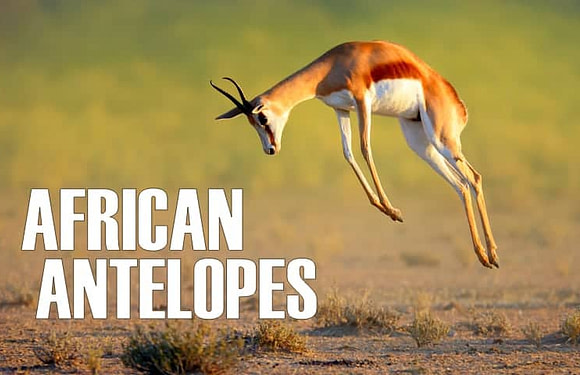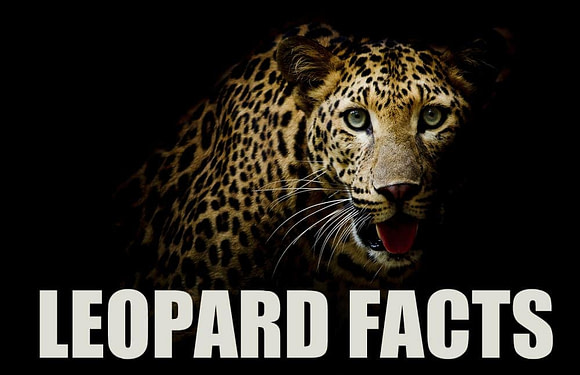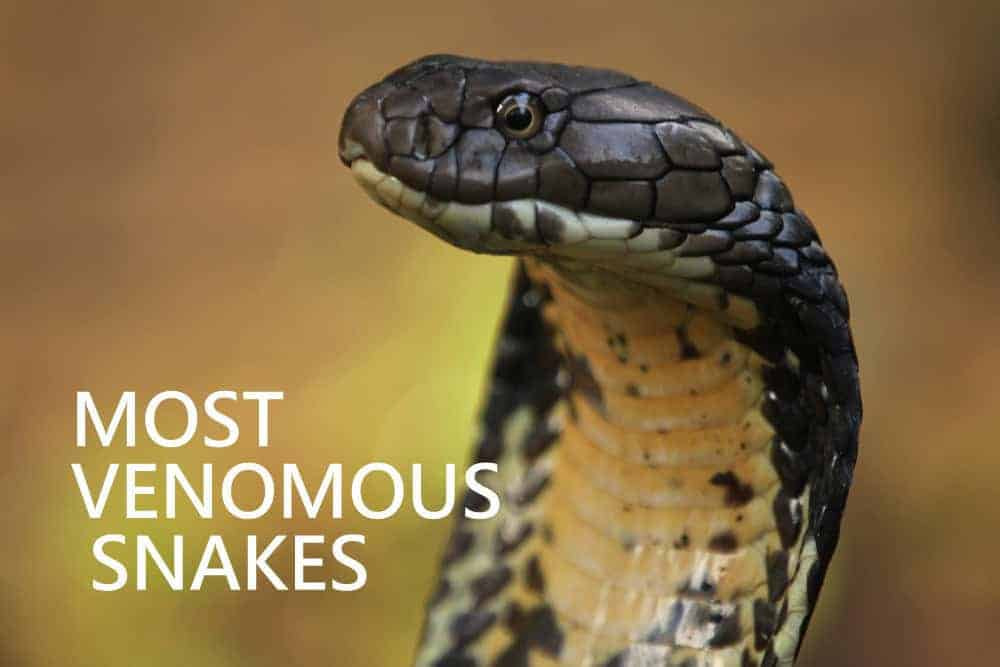
What is Venom?
Venom is a substance produced by various animals for predation, defense, and competition.
It is essentially a mixture of bioactive proteins and peptides, including neurotoxins, cytotoxins, cardiotoxins, and hemotoxins, among others. These substances can disrupt nerve function, break down cells and tissues, inhibit blood clotting, or affect the cardiovascular system. The specific mixture of toxins in a snake’s venom is finely tuned to target its preferred prey, so the composition of venom can vary widely between species.
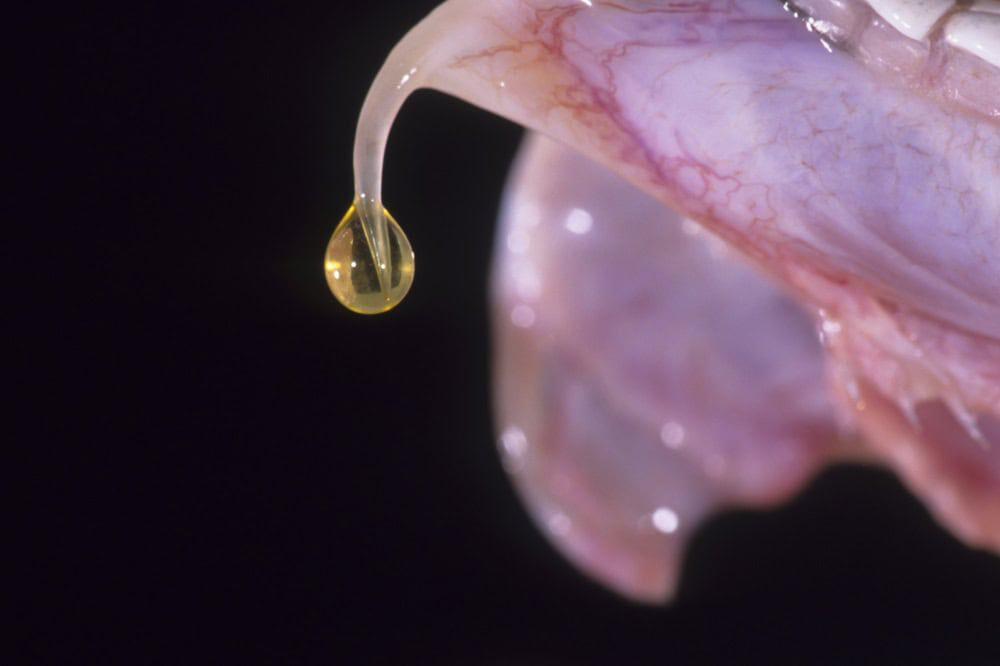
Snake venom can be classified into three main types:
- Neurotoxic Venom: Affects the nervous system, leading to paralysis.
- Hemotoxic Venom: Acts on the cardiovascular system, disrupting blood clotting and causing tissue damage.
- Cytotoxic Venom: Causes local tissue destruction and inflammation.
Note that these classifications are not exclusive; many snake venoms are a mix of these types.
How is Venom Produced?
Venom is produced in specialized temporal glands. In snakes, these cells are located in venom glands located on either side of the head, typically behind the eyes. These glands produce the various components of the venom, driven by the snake’s genetic instructions. The synthesis of venom is influenced by several factors, including the snake’s age, diet, and environment. The venom is then stored in a reservoir until the animal decides to deliver it through a bite.

When a snake injects venom, it contracts muscles around its venom glands, squeezing the venom out through its fangs. Snakes can control the amount of venom injected based on the size and type of prey, the perceived threat, and the reserve of venom available.
Why Do Snakes Have Venom?
Venom is a finely tuned biological weapon that provides survival advantages. It allows snakes to subdue prey more effectively, which makes them more successful as predators. Venom also provides an excellent defense against potential threats.
From an evolutionary perspective, venomous animals tend to occupy ecological niches where their venom gives them a competitive edge. Over millions of years, these animals have refined their venomous capabilities, which is evident in the specificity and potency of their toxins.
The 12 Most Venomous Snakes
1. Inland Taipan (Oxyuranus microlepidotus)
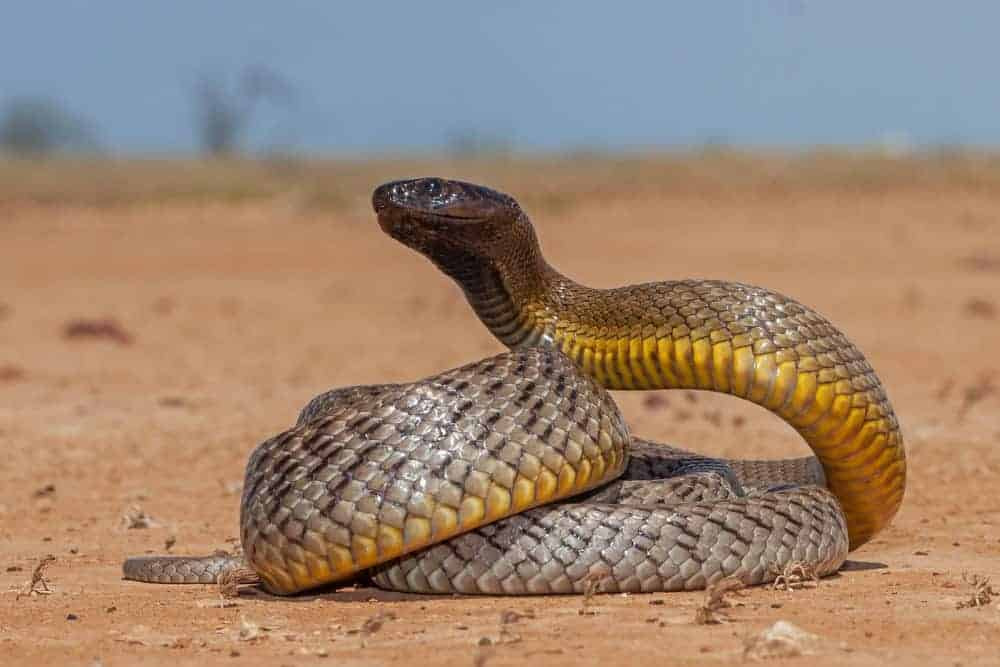
The Inland Taipan, often referred to as the “fierce snake,” has the most powerful venom of all snakes. Found in central Australia, it has a slender build, is typically a light brown or olive shade, and measures about 6 feet (1.8 meters) in length. This snake’s diet primarily consists of small mammals, particularly rodents, which it actively hunts during the day.
The venom of the Inland Taipan is designed to kill warm blooded mammals. It has enough neurotoxins in one bite to kill over 100 human adults. Fortunately, it is a shy and reclusive species, often avoiding human interaction. It is only responsible for a few recorded fatalities.
2. Eastern Brown Snake (Pseudonaja textilis)
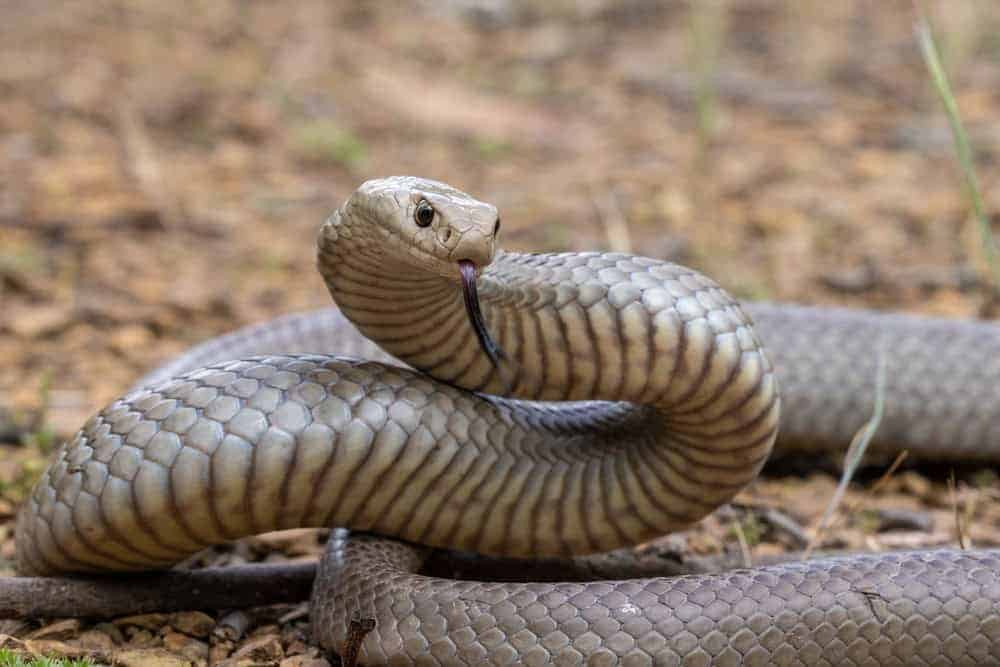
The Eastern Brown Snake is one of the most dangerous snakes in Australia, due to its proximity to populated areas and its potent venom. It grows to about 5 feet (1.5 meters) in length and has a thin, streamlined body with variable colors ranging from very pale fawn to black.
This species is highly adaptable, inhabiting everything from grasslands and forests to urban areas, and it primarily feeds on frogs, birds, and small mammals. The venom of the Eastern Brown Snake is highly toxic and fast-acting, causing progressive paralysis and uncontrollable bleeding.
3. Coastal Taipan (Oxyuranus scutellatus)
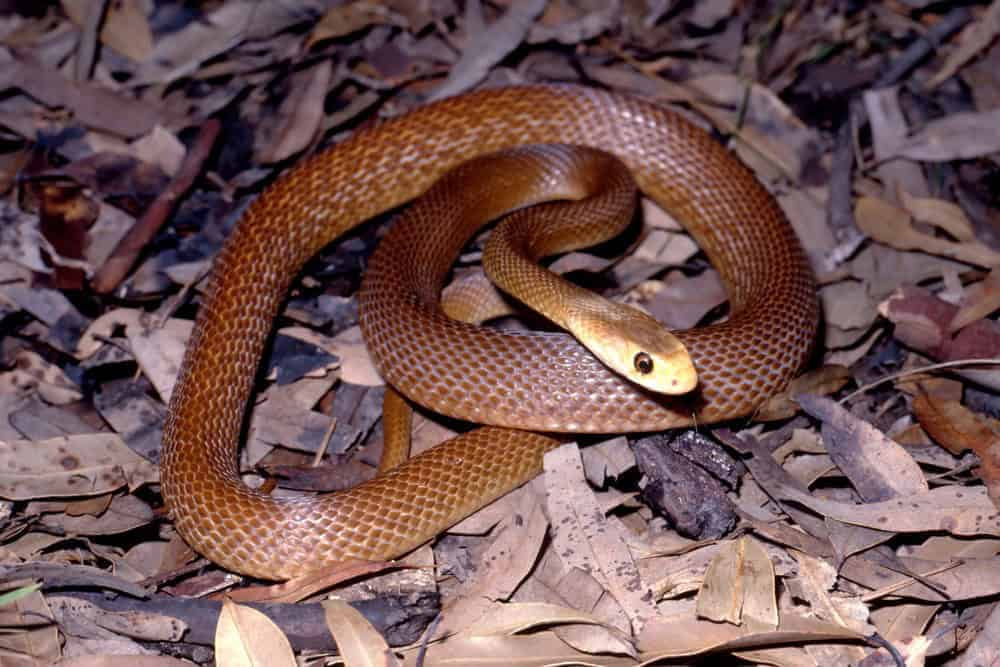
The Coastal Taipan is one of the largest venomous snakes in Australia and has the third most toxic of all snake venoms in the world. This snake resides in the coastal regions and hinterlands of northern and eastern Australia, often seen in sugarcane fields where it hunts for small mammals and birds. It has a sleek build with light olive or browncoloration and can reach a length of 10 feet (3 meters).
The venom of the Coastal Taipan is exceptionally potent, affecting the victim’s nervous system and blood clotting mechanisms. The most powerful ingredient is a neurotoxin which paralyses the nerves of the heart, lungs and diaphragm, suffocating the victim.
4. Many-Banded Krait (Bungarus multicinctus)
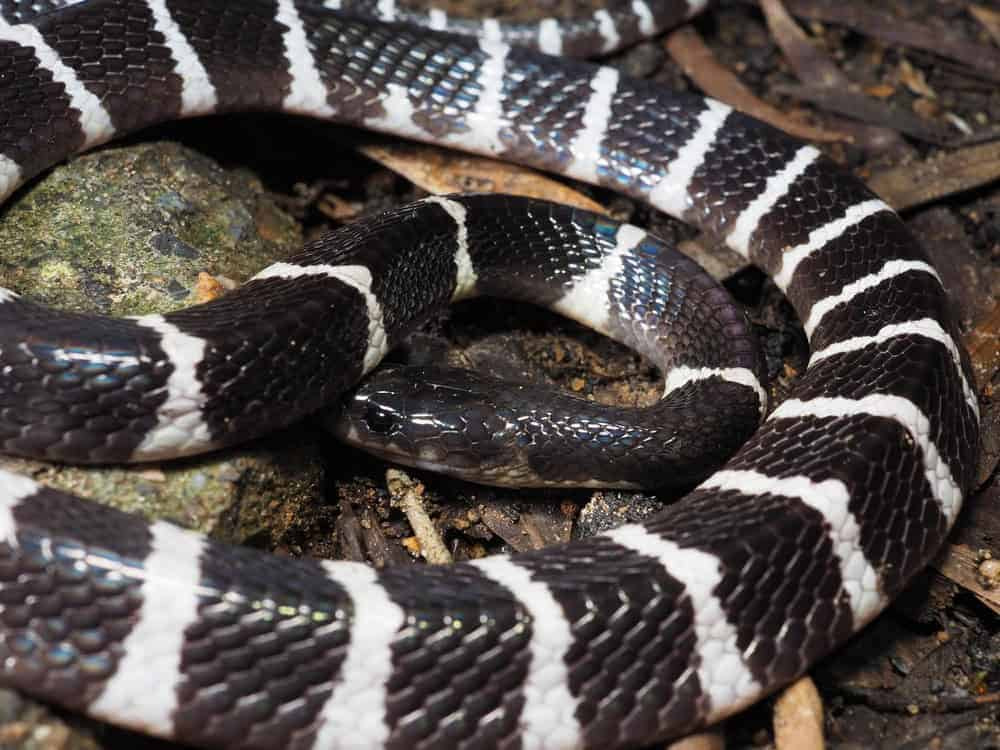
The Many-Banded Krait, also known as the Chinese Krait, is easily recognized by its alternating black and white bands. It is found in East and Southeast Asia and typically reaches a length of 4 feet (1.2 meters).
This dangerous snake prefers wet environments like rice paddies and swamps. Its diet consists of other snakes, frogs, and small lizards. Their venom is highly neurotoxic, which can lead to muscle paralysis and respiratory failure overnight. This snake is more nocturnal than many other venomous snakes, making human encounters less common during the day.
5. Black Mamba (Dendroaspis polylepis)
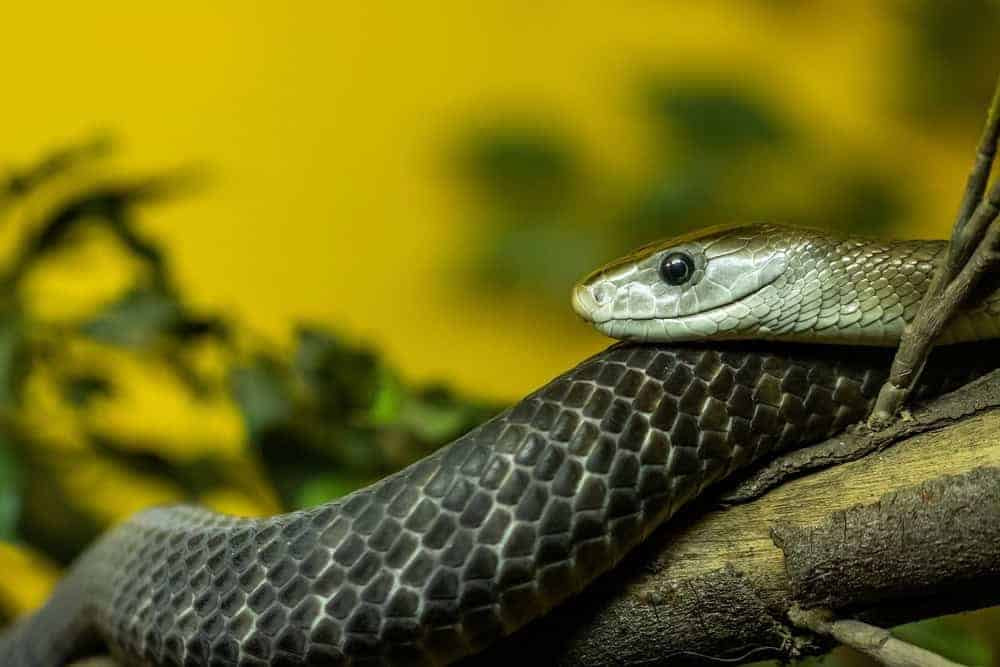
The Black Mamba is feared for its speed and aggression. It can grow up to 14 feet (4.3 meters) long, making it the longest venomous snake in Africa. Its name derives from its black coloration inside its mouth, whereas its skin usually ranges from grey to dark brown.
The Black Mamba inhabits a variety of habitats from forests to savannas. It is known to be one of the fastest snakes, capable of moving up to 12 miles per hour (19 km/h). It preys on birds and small mammals. Its extremely potent venom can cause death in humans within hours if antivenom is not administered.
6. King Cobra (Ophiophagus hannah)
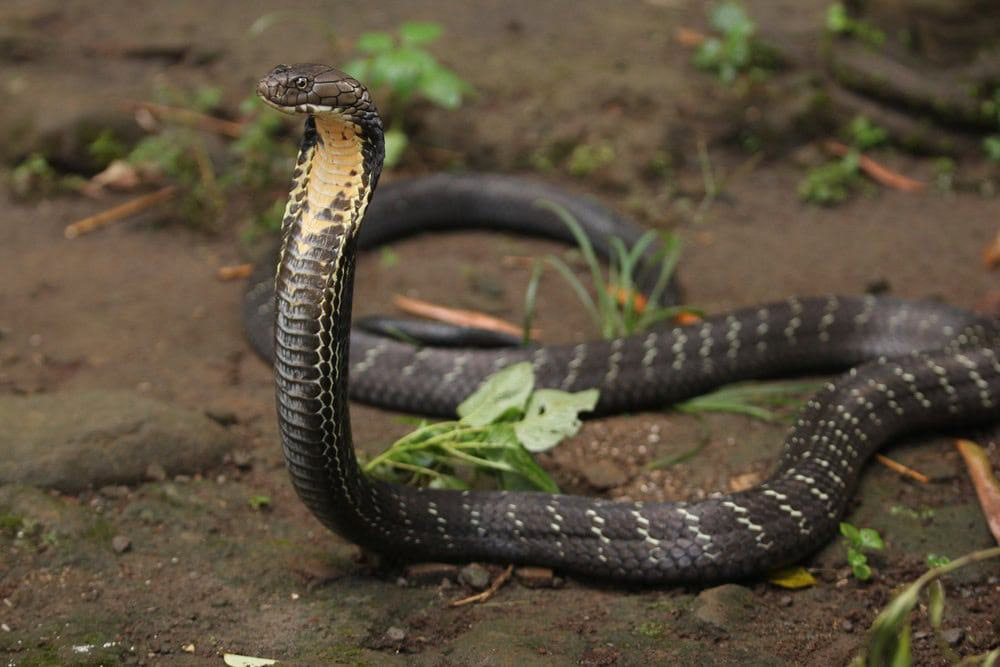
The King Cobra is the world’s longest venomous snake, with adults typically reaching up to 18 feet (5.5 meters). It has a robust and muscular body that can be olive, brown, or black. This snake is found primarily in the forests of Southeast Asia and the Indian subcontinent. It has a unique diet, primarily feeding on other snakes, including venomous species.
The venom of the King Cobra is not the most potent among venomous snakes, but the quantity it delivers in a single bite (enough to kill an elephant) makes it particularly deadly.
7. Tiger Snake (Notechis scutatus)
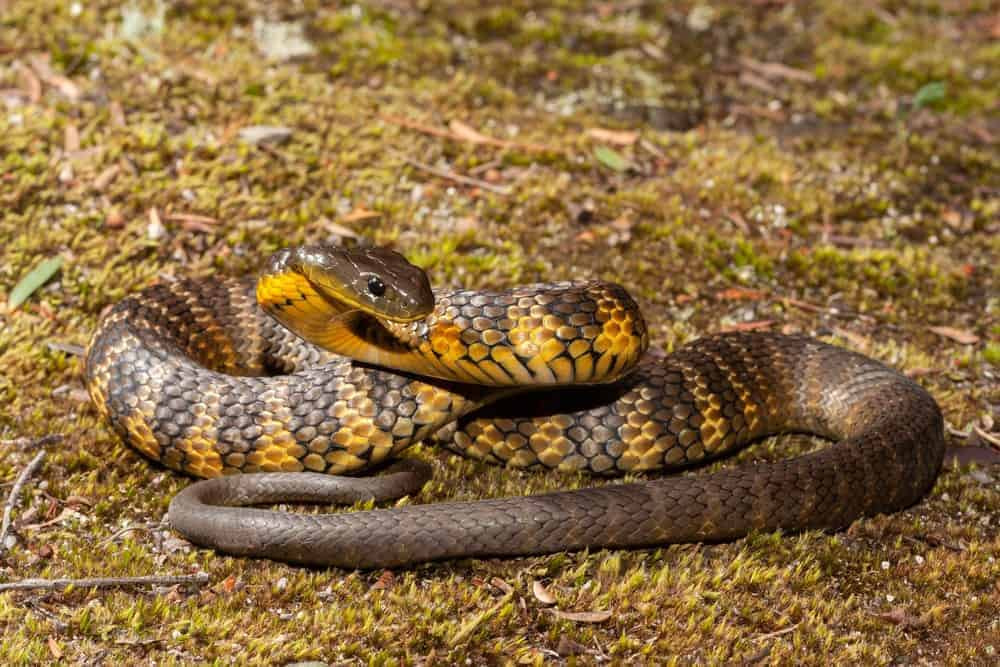
Tiger Snakes are found in southern regions of Australia. Their name comes from their banded appearance, which can vary in color from yellow and black to brown, olive, or even solid black. These snakes average around 4 feet (1.2 meters) in length. They thrive in diverse environments, from wetlands to grasslands, and their diet consists mainly of frogs, birds, and small mammals.
Tiger Snake venom is highly toxic and can cause significant pain, numbness, and tingling immediately following a bite, potentially leading to paralysis or even death in humans.
8. Russell’s Viper (Daboia russelii)

Russell’s Viper is a large, heavy-bodied snake, reaching lengths of up to 5 feet (1.5 meters). It has a distinctive pattern of dark brown or black splotches against a yellowish-brown or pinkish-grey background. This species is commonly found in open, grassy or bushy areas of Asia, particularly in India and China. This viper feeds on rodents, lizards, and small birds.
Its venom is highly hemotoxic, affecting blood clotting and causing severe pain, swelling, and often permanent tissue damage. Russell’s viper is responsible for more snakebite incidents and deaths than any other Asian snake, due to its tendency to thrive near human habitation.
9. Blue Krait (Bungarus caeruleus)
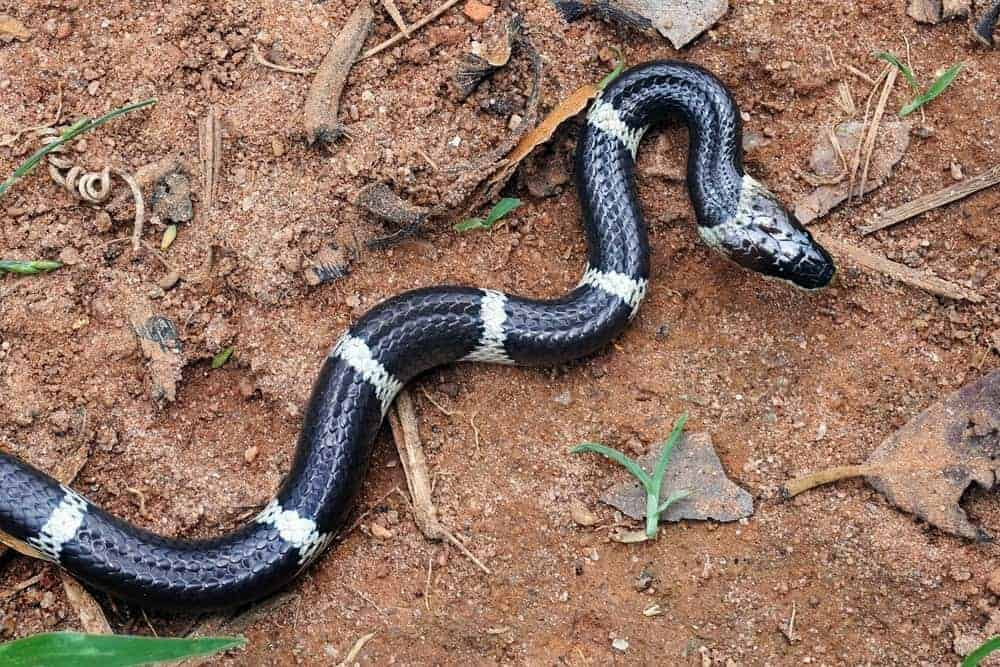
The Blue Krait, also known as the Common Krait, is primarily found in the Indian subcontinent and Southeast Asia. It measures around 3 feet (0.9 meters) and exhibits patterns of blue-black crossbands over a bluish-white body. This snake prefers moist habitats such as fields, forests, and the vicinities of water bodies where it feeds on other snakes, including its own species.
Its venom is highly neurotoxic, capable of causing muscle paralysis and respiratory failure, often without significant pain or symptoms at the bite site. The snake is significantly more venomous at night, matching its nocturnal nature.
10. Death Adder (Acanthophis antarcticus)
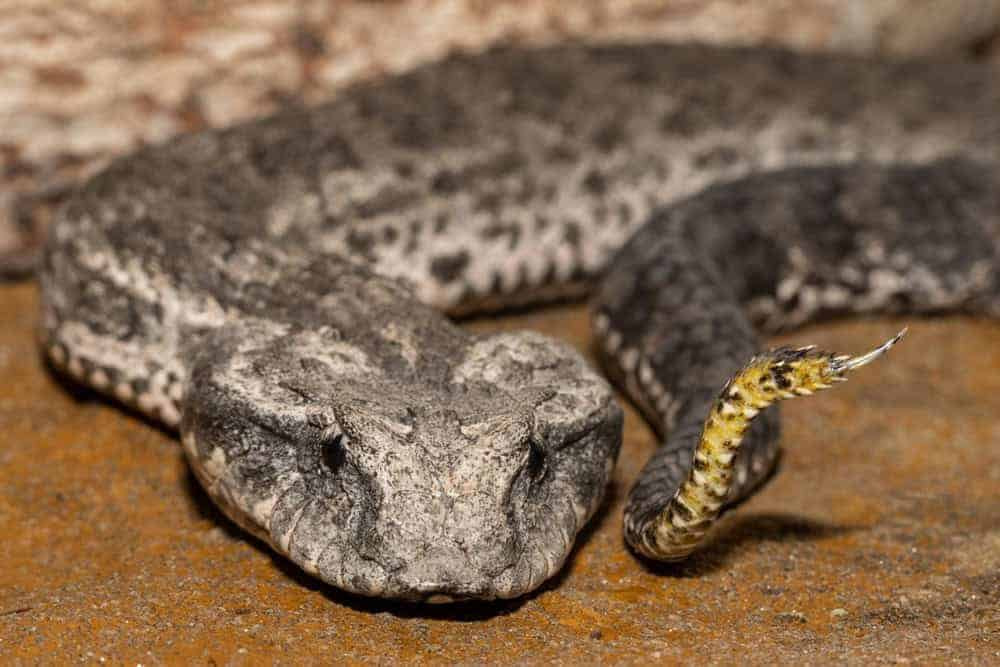
Unlike most snakes, Death Adders do not actively hunt or chase their prey. Instead, they use a method known as “caudal luring,” where they wiggle the tip of their tail to mimic the movements of a worm or small insect. This luring technique attracts prey within striking distance. It can motionless and concealed for extended periods, making it one of the best ambush predators among snakes.
The Death Adder has a robust and short body, typically reaching about 2.5 feet (0.75 meters) in length. It has a broad, flattened head and a striking pattern that helps it camouflage into the leaf litter. This Australian snake feeds on birds and small mammals.
The venom of the Death Adder is extremely potent, causing paralysis and death in humans within six hours if untreated.
11. Philippine Cobra (Naja philippinensis)
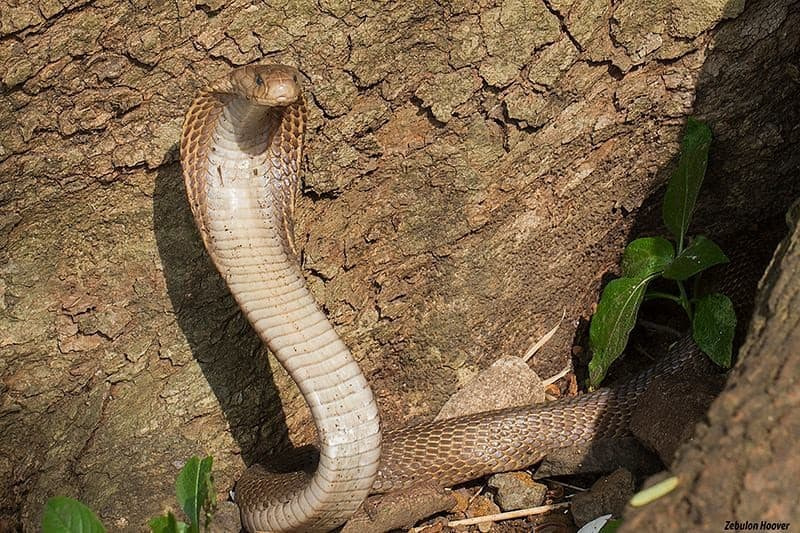
Found across the northern regions of the Philippines, the Philippine Cobra is a medium-sized cobra that lives in low-lying plains and forested regions near water sources. Typically measuring around 3.3 feet (1 meter) in length, it preys on a variety of small vertebrates including frogs, small mammals, and occasionally fish. The snake has a hooded head and a light to medium brown color, often with darker patterns.
The Philippine Cobra’s venom is highly neurotoxic, affecting the respiratory system and capable of causing death within hours due to respiratory failure. It can even spit venom up to 10 feet (3 meters) as a defense mechanism.
12. Cape Cobra (Naja nivea)
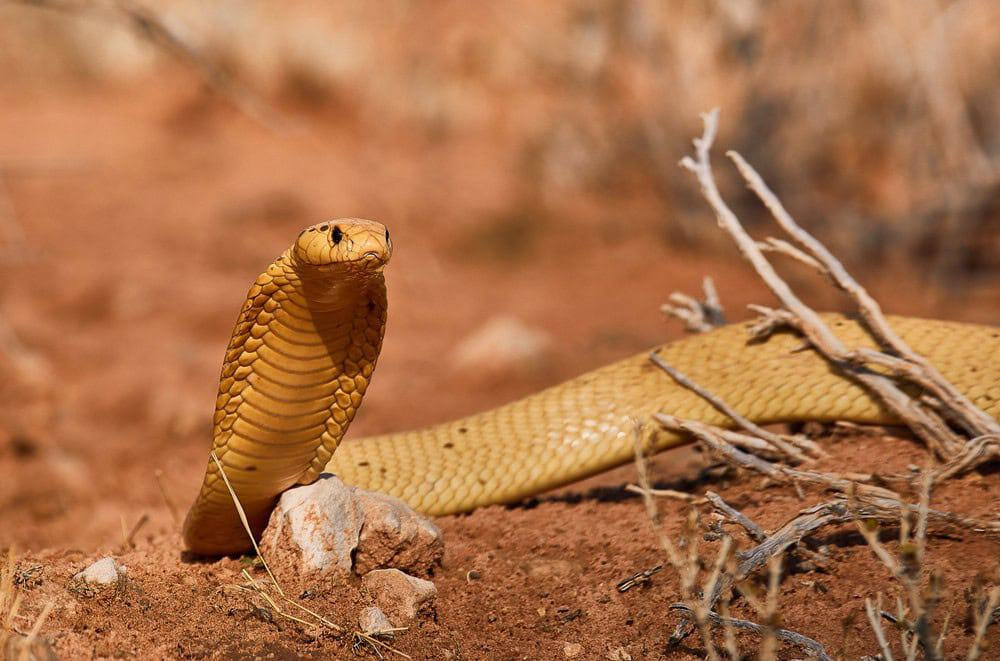
The Cape Cobra inhabits a wide range of environments in southern Africa, including semi-desert regions, scrublands, and around human habitations. The snakes has a propensity to enter human dwellings, particularly during extreme weather conditions, making it one of the more commonly encountered cobras in its range. The Cape Cobra varies in color from yellow and golden to brown or even black. It typically measures about 4 to 5 feet (1.2 to 1.5 meters) in length.
The venom of the Cape Cobra is highly neurotoxic. Bites can lead to severe neurological damage, respiratory failure, and death in humans. Its diet primarily consists of snakes, rodents, lizards, birds, and carrion.























































